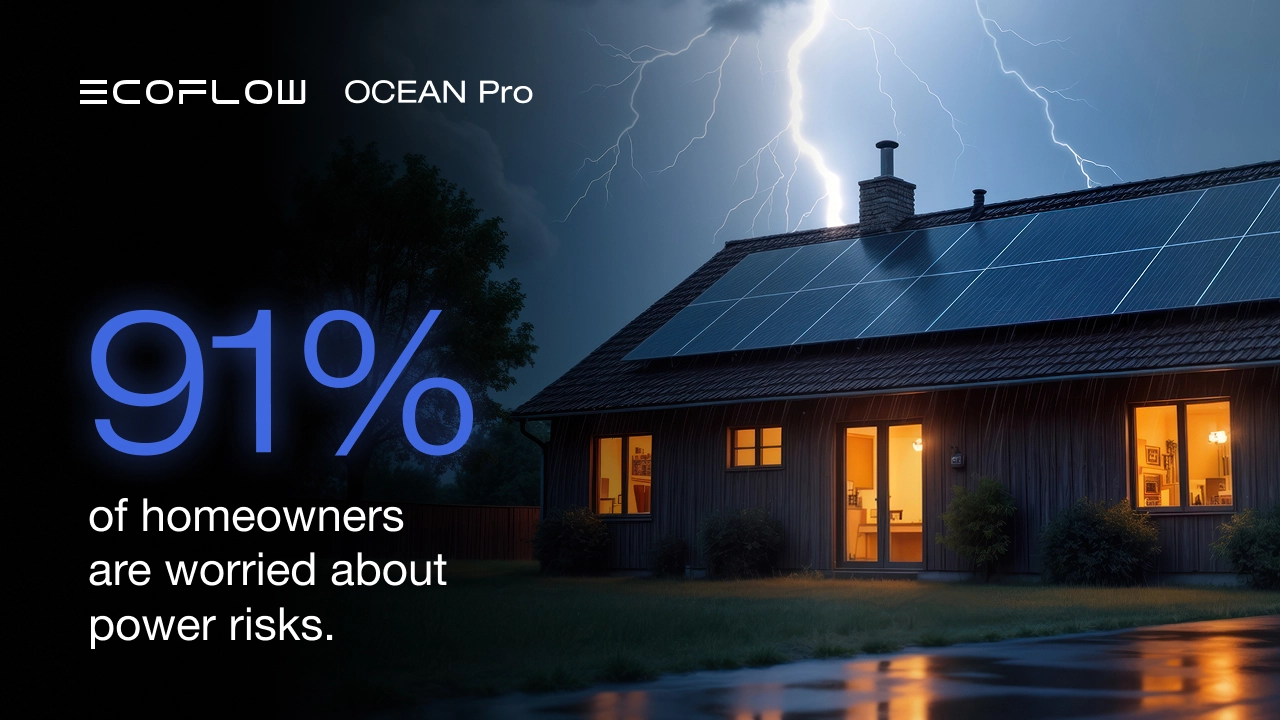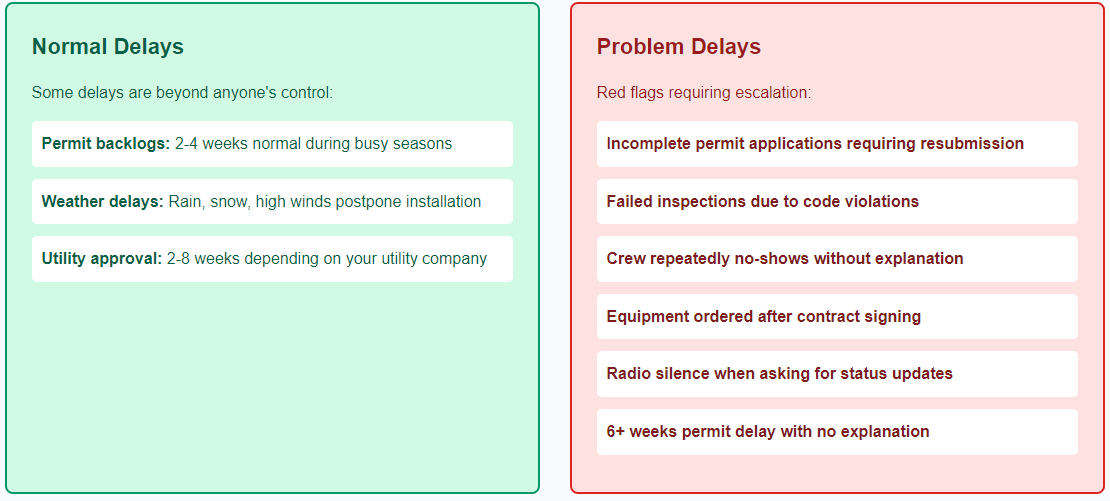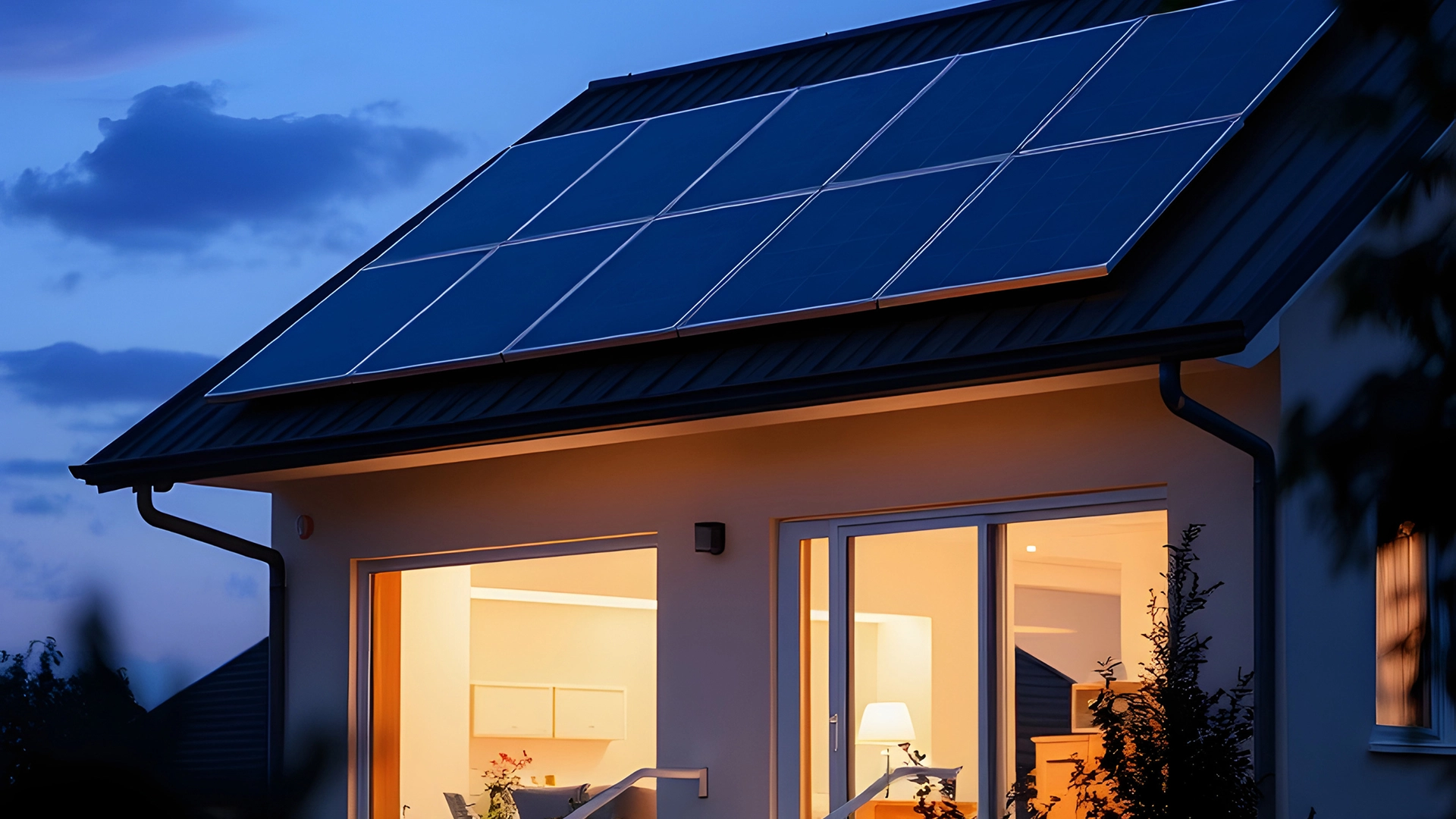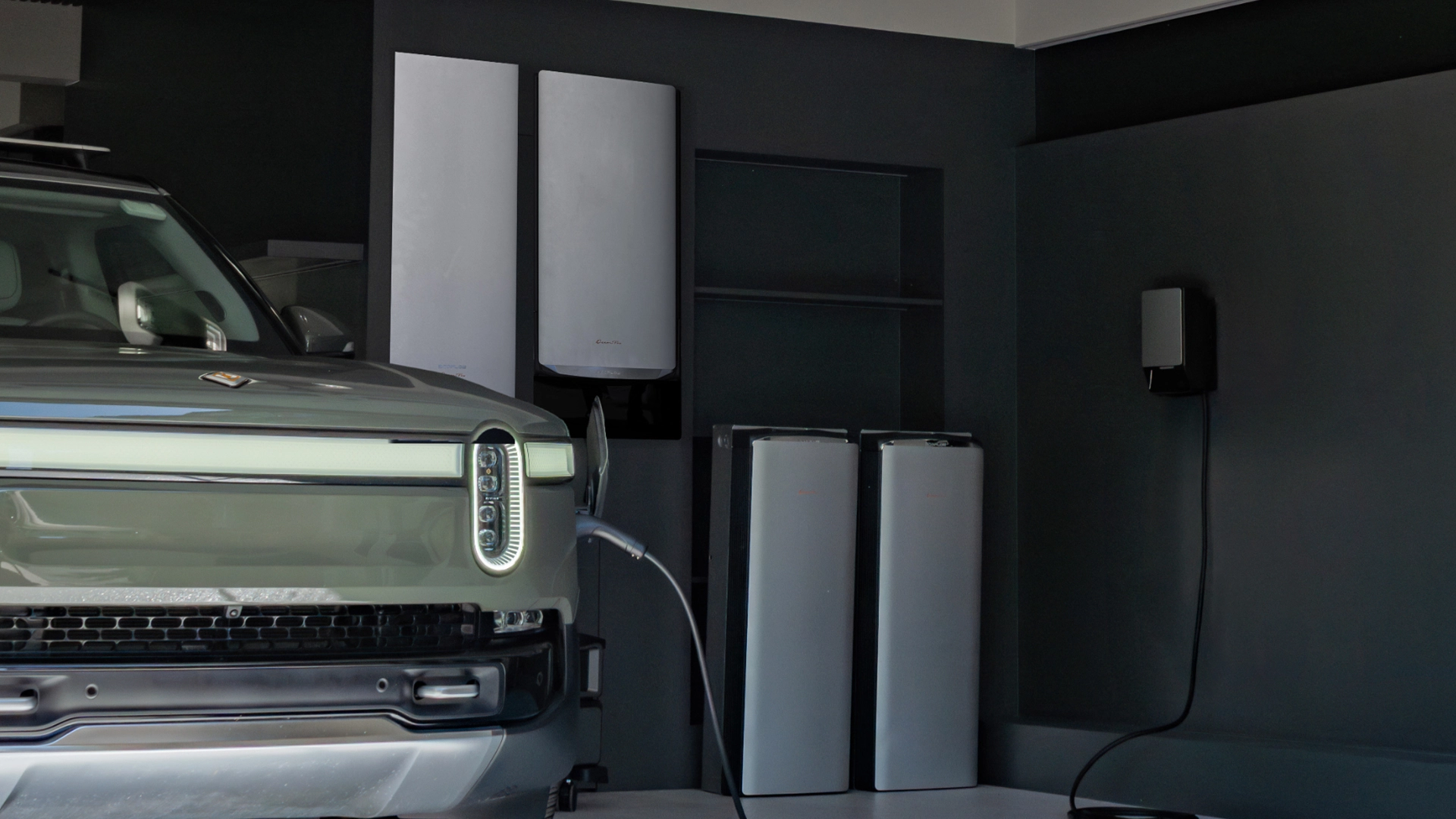How to Effectively Communicate with Solar Providers Throughout the Entire Solar System Lifecycle
- Phase 1: Pre-Installation Communication
- Finding the Best Solar Providers: What to Look for Before Installation
- Phase 2: Installation Phase Communication
- What Should I Expect When Working with Solar Energy Providers During Installation?
- Phase 3: Post-Installation Communication
- How Can Solar Energy Providers Support Your System After Installation?
- 6 FAQs About Choosing the Right Solar Provider
Finding solar providers near me is easy. Getting great results from your solar power providers? That takes smart communication. The homeowners with the smoothest installations and fewest problems aren't lucky—they just know what to say and when to say it. Whether you're choosing the best solar providers or troubleshooting your system years later, these communication strategies make all the difference.
Phase 1: Pre-Installation Communication
Finding the Best Solar Providers: What to Look for Before Installation
The pre-installation phase determines whether your solar project goes smoothly or becomes a nightmare. Taking time now to research contractors and set communication expectations saves you thousands in headaches later.
How Do I Find and Compare Solar Providers Near Me?
Finding reliable solar providers takes more than clicking the first Google result. Here's your vetting checklist:
Get Multiple Quotes and Check Reviews
Request at least three quotes from local solar companies. Check Google, Yelp, and Better Business Bureau reviews—look for patterns, not just star ratings. If multiple reviews mention poor communication, that's your red flag.
Verify Credentials
Confirm certified solar contractors have proper licensing and NABCEP certification. Ask for proof of insurance. If they hesitate to provide documentation, walk away.
See Their Work
Ask for addresses of completed projects in your area. Drive by or knock on doors—most homeowners will share their experience. Check if installations look neat and professional.
Compare Warranties
The best solar providers offer at least 10-year workmanship warranties. If they only offer one or two years, they're not confident in their work.
What Questions Should I Ask Solar Energy Providers During Consultations?
About the Company
How long have you been in business, and how many solar systems have you installed?
Are you NABCEP-certified, licensed, bonded, and insured?
Can you share references from at least three satisfied customers?
Do you subcontract any work, and if so, how do you ensure quality?
How much experience do you have with my local utility company?
What kind of system do you have on your own roof or business?
Equipment & Performance
- Which equipment do you recommend and why?
- What is the degradation rate of these panels?
- What warranty protection comes with the panels, inverters, and other equipment?
- What problems have other homeowners experienced with this equipment?
- How will I monitor my system's performance?
- Who do I contact if something goes wrong with my equipment?
Costs & Financing
Can you provide itemized pricing for everything?
What does your warranty actually cover?
What are the complete financing terms?
How can I be sure I'm eligible for the solar tax credit?
What rate of utility cost increase do you use in your savings estimates?
Will solar panels increase my home value?
Who handles all the paperwork for permits and inspections?


What Should Be in Your Solar Quote?
A comprehensive solar quote answers more questions than it raises. Before signing anything, verify your quote includes all these essential details. If information is missing, request it immediately—incomplete quotes hide problems.
⚠️ If any information is missing, request it immediately. Incomplete quotes hide problems.
System Specifications
System size (kW DC): Determines your production capacity
Expected yearly production (kWh/year): Your anticipated annual output
Panel degradation rate: Should be 0.5% per year or less
Number of panels and placement diagram: Visual showing exact panel locations on your roof
Equipment Details
Panel make, model, and quantity: Specific names and numbers, not generic descriptions
Inverter make and model: Full specifications for the system's brain
All warranty information: Panels (25+ years), Inverters (10-25 years), workmanship (10+ years)
Battery storage details (if applicable): Make, model, capacity (kWh), and output (kW)
Financial Breakdown
Total cost before incentives: Full price in clear dollars and dollars per watt
All available incentives: Federal tax credit and other programs itemized
Final cost after incentives: Your actual out-of-pocket investment
Financing details (if financed): APR, monthly payment, loan amount, and term
Payment schedule: When deposits and final payments are due
Performance & Savings
First-year production: How many kWh your system generates in year one
Annual savings estimate: Dollar amount you'll save on electricity bills yearly
Utility rate assumptions: Annual increase percentage (should be 2-4%)
Payback period: Years until savings equal your investment
25-year savings projection: Total estimated savings over system lifetime
Red Flags - Avoid Quotes With These Issues
Missing equipment model numbers (just says "premium panels")
No degradation rate or rates above 0.8% annually
Unrealistic utility increases over 5% annually
Missing or unusually short warranty periods
No visual roof layout showing panel placement
Pressure to sign immediately before "prices increase"
Large price differences without clear explanations
Compare quotes side-by-side using these criteria. The lowest price isn't always the best value—equipment quality, warranty coverage, and installer reputation matter more than saving a few hundred dollars upfront.
How to Set Up Communication Channels with Your Solar Power Providers
Clear communication protocols prevent most solar project frustrations. Lock these down before signing anything:
Designate Your Primary Contact
Get a dedicated contact person from solar power providers—their direct phone, email, and working hours. Avoid companies that only offer general customer service numbers.
Define Specific Dates
Push for exact dates: when permits get filed, installation start date, completion date. Ask how they'll notify you of delays. Good contractors communicate proactively; bad ones ghost you.
Set Response Expectations
Ask: "How quickly will you respond to questions?" Expect 24-48 hours for non-emergencies. If they won't commit during the sales process, they'll be worse after you pay.
Document Everything
Your contract should include all equipment specs, timelines, warranties, and payment schedules. If it's not written down, it doesn't exist. Keep copies of all permits and inspection reports in one folder.
Track All Communication
Use a simple email folder or spreadsheet to log conversations with dates and commitments. This protects you if disputes arise later.
Phase 2: Installation Phase Communication
What Should I Expect When Working with Solar Energy Providers During Installation?
Installation is where plans become reality—and where communication matters most. Solar energy providers handle the heavy lifting, but staying engaged throughout the process ensures you get the quality you paid for. Most installations take one to three days, but the coordination starts weeks earlier.
What to Confirm with the Best Solar Providers Before Installation Begins
Don't let your installation team show up without confirming these critical details first:
- "Are all permits approved and ready?" – Ask for copies of approved building permits and HOA approvals—starting without them can halt your project and cost you money.
- "What's the exact installation schedule?" – Get specific start and end dates, crew arrival time, and their plan for weather delays or inspection delays.
- "What site preparation do I need to handle?" – Clear the electrical panel area and ensure roof access is unobstructed—ask about trimming trees or moving vehicles to prevent day-of delays.
- "When are inspections scheduled?" – Confirm your contractor schedules all inspections, not you, and ask about typical wait times in your area.
- "How does utility coordination work?" – Ask when your contractor submits interconnection paperwork and how long approval takes—some utilities respond in weeks, others take months.
- "Is the equipment in my contract still available?" – Confirm the exact panels and inverters from your quote are in stock—accept substitutions only if they match or exceed original specifications and warranties, never downgrades without a price reduction.
What Should I Expect During the Solar Installation Timeline?
Physical installation takes just 1-3 days, but the complete process from contract signing to system activation takes 1-3 months. Understanding this timeline prevents frustration and helps you recognize when delays become problems.
Typical Installation Timeline:
Physical installation takes 1-3 days, but the complete process takes 1-3 months.
Your Contractor's Responsibilities
Your solar provider handles all coordination:
Submit complete permit applications with accurate technical drawings
Schedule and manage all inspections
Submit utility interconnection agreements
Coordinate installation crew scheduling
Obtain final permission to operate from your utility
Your Responsibilities:
Your role is minimal but important:
Provide site access on agreed dates
Respond promptly to requests for information or signatures
Be available for the final walkthrough
Contact your homeowner's insurance to add the system to your policy
Normal Delays vs. Problem Delays:
Some delays are completely normal and beyond anyone's control:


If your project exceeds the original timeline by more than 25% without clear explanation and regular updates, escalate to company management.
How to Stay Connected with Your Installation Team Throughout the Process
Active communication during installation catches problems early and ensures quality work. Here's how to stay in the loop without micromanaging:
- Check In Daily: Talk briefly with the installation team lead each morning or end of day—ask what they accomplished, what's next, and if they've hit any issues to prevent surprises.
- Watch for Quality Control Red Flags: Periodically check for clean wire routing, secure panel mounting, and proper roof flashing—if something looks off, ask immediately rather than waiting.
- Understand Safety Protocols: Speak up if you see unsafe behavior like missing harnesses or improper ladder use—safety matters more than finishing quickly.
- Request Progress Updates: Ask for photo updates if you can't be home during multi-day installations—this documents the process and keeps you informed.
- Address Problems Immediately: Damaged shingles or messy wiring are easier to fix during installation than after the crew leaves—speak up right away.
Completing Your Final Walkthrough with Solar Power Providers
Your final walkthrough with solar power providers is your last chance to catch issues before signing off. Don't rush this step:
- Test System Functionality: Watch them power up your system—verify the inverter display works and your monitoring app shows real-time production. If anything doesn't work, get it fixed now, not later.
- Review Monitoring Setup: Access your monitoring platform on your phone or computer while they're there—have them show you how to read production data, understand alerts, and check system status. Write down your login credentials.
- Collect All Documentation: Get copies of all warranty documents (panels, inverters, workmanship), final inspection reports, utility interconnection agreements, and operation manuals before they leave—store everything together.
- Verify Performance Expectations: Ask what daily and monthly production you should expect for your system size and location—get these numbers in writing so you can spot problems early.
- Confirm Next Steps: Understand what happens next: when final inspections occur, how long until utility permission to operate, and who contacts you when the system goes live. Get a timeline and contact information.


How to Resolve Issues with Solar Providers Near Me During Installation
Even with great solar providers near me, problems sometimes happen. Here's how to handle them effectively:
- Document the Problem: Take clear photos or videos of issues like damaged materials or sloppy work, then email them to your project manager immediately—written documentation creates accountability.
- Communicate Issues Promptly: Call or email your primary contact as soon as you notice defects and ask how they'll fix it—contractors prefer early warnings over surprise complaints after completion.
- Understand Your Leverage: Never make final payment until all issues are resolved and you're completely satisfied—your final payment is your only leverage for getting problems fixed properly.
- Know When to Escalate: If your contact isn't responsive, ask to speak with a supervisor or owner—for serious issues like safety concerns or contract violations, document everything and contact your state's contractor licensing board.
- Use Your Contract: Reference specific contract terms when addressing problems—if they promised certain equipment or timelines, hold them to it as your contract is your protection.
Phase 3: Post-Installation Communication
How Can Solar Energy Providers Support Your System After Installation?
Your relationship with solar energy providers doesn't end when the system turns on—it's just beginning. Solar panels last 25+ years, and maintaining strong communication throughout that lifespan protects your investment and maximizes savings. The companies that provide excellent post-installation support separate themselves from installers who disappear after collecting final payment.
Building a Long-Term Partnership with Your Solar Power Providers
Think of your relationship with solar power providers as a long-term partnership, not a one-time transaction. Here's how to set that foundation:
Save All Technical Support Contacts
Store technical support phone numbers, emails, and emergency contact info where you can easily find them. Add these contacts to your phone and create a dedicated folder for solar-related emails. When your system throws an error at 6 PM on a Friday, you'll be glad you saved this information.
Register Your Warranties Immediately
Don't wait—register your system with equipment manufacturers within 30 days of installation. Most panel and inverter warranties require registration to remain valid. Your contractor should help with this, but verify it's completed. Missing registration deadlines can void thousands of dollars in warranty coverage.
Set Up System Monitoring
Configure your monitoring app to send alert notifications for system issues. Set alerts for zero production days, significant drops in output, or inverter errors. Catching problems early—when they're still under warranty—saves you major repair costs down the road. Advanced whole-home energy storage systems like the EcoFlow OCEAN Pro include AI-powered monitoring with ChatGPT integration that provides smart alerts and remote diagnostics, making it easier to catch issues before they become expensive problems.
Establish Communication Preferences
Tell your contractor how you prefer to be contacted for routine matters—email, phone, or text. Ask about their typical response times for different issue types. Emergencies (like sparking equipment) need same-day response, while performance questions can wait 48 hours.
When Should I Schedule Maintenance with Solar Providers Near Me?
Solar systems need surprisingly little maintenance, but the maintenance they do need is critical. Here's your maintenance schedule:
- Annual Inspections – Schedule yearly checkups with solar providers near me to catch small issues before they become expensive problems. Annual inspections should include electrical connection checks, inverter performance review, and visual panel inspection for damage or debris buildup.
- After Major Weather Events – Call for an inspection after severe storms, hail, high winds, or heavy snow. Even if your system seems fine, hidden damage to wiring or mounting hardware can worsen over time.
- When Performance Drops – If production drops more than 10% compared to the same month last year (accounting for weather differences), schedule a performance check immediately. This often indicates equipment problems or excessive soiling.
- Panel Cleaning Services – Most residential systems in areas with regular rain don't need cleaning. But if you live in dusty areas, near farms, or under trees that drop debris, schedule cleaning services once or twice yearly. Clean panels produce 5-15% more energy.
- Before Warranty Expires – Schedule a comprehensive inspection 6-12 months before major warranties expire. If equipment shows signs of failure, you want to catch it while still covered. Don't wait until the day after warranty expires to discover problems.
What to Do When You Experience Issues: Working with the Best Solar Providers
System problems happen. How you communicate these issues to the best solar providers determines how quickly they get resolved:
- Gather Information First: Check your monitoring app for error codes and screenshot any messages before calling—note when the problem started and what changed to help technicians diagnose issues faster.
- Describe Problems Clearly: Say "my monitoring app shows zero production for three days with error code E047" instead of "my solar isn't working"—specific details mean faster fixes and fewer service calls.
- Understand System Diagnostics: Learn basic troubleshooting first—many "problems" are just temporary utility disconnections during grid maintenance, so check if neighbors have power and your main breaker before calling.
- Know Your Response Time Expectations: Emergencies like smoking equipment need same-day response, complete failures need service within 2-3 days, and minor issues can wait a week—escalate to management if they miss these timelines.
- Use Warranty Coverage Wisely: Keep warranty documents accessible and know what's covered—some warranties include labor while others cover parts only, so understanding this prevents surprise bills when equipment fails.


How to Maximize Your Solar System's Performance Over Time
Proactive communication with solar energy providers keeps your system running at peak efficiency for decades:
Schedule Annual Performance Reviews
Once a year, review your system's production data with your contractor. Compare actual output to original estimates. If you're consistently underperforming, identify why—shading from tree growth, equipment degradation, or soiling issues all have different solutions.
Discuss System Upgrades
Technology improves constantly. After 7-10 years, newer inverters might offer better efficiency or monitoring features. Battery storage prices drop regularly, which reduces the cost of backup power. Ask your contractor about technology updates that make sense for your system. Sometimes a small upgrade significantly boosts performance.
Battery storage has become increasingly practical for homeowners looking to maximize solar investment. Modern whole-home energy storage systems like the EcoFlow OCEAN Pro offer modular scalability—starting at 10kWh and expanding up to 80kWh as your needs grow. With 40kW solar input capacity, 24kW continuous power output, and AI-driven energy optimization that can cut bills by 40%, these batteries provide true energy independence while integrating seamlessly with existing solar installations.
Make a Capacity Expansion Plan
Added a pool or an electric car? Your solar system may need to be expanded because your energy needs have changed. Talk about capacity extension options as soon as possible; adding panels to an existing system is frequently easier and less expensive than you might imagine, especially if there is room on your roof.
Be Up to Date on Incentives
Solar subsidies are subject to change. Upgrades or expansions may qualify for new utility programs, tax credits, or rebates. Reputable contractors alert current clients to new opportunities. If not, inquire during your performance review or visit your utility's website once a year.
Continue to Communicate Over Time
Maintaining contact with your original installer is advantageous, even after warranties have expired. They are the most knowledgeable about your system and frequently give previous clients reduced services. Every couple of years, send a brief email to check in; this relationship will pay off when you finally require improvements or repairs.
Get the Solar Results You Deserve
Choosing solar providers near me is just the start—how you communicate with them determines everything that follows. The homeowners with the smoothest installations and fewest headaches aren't lucky; they asked better questions, stayed engaged, and picked solar power providers who valued transparency. Look for the best solar providers who respond quickly, put agreements in writing, and actually show up when you need them. Your solar investment is too big to trust solar energy providers who can't be bothered to communicate well.
6 FAQs About Choosing the Right Solar Provider
Q1: How do I find reliable solar providers near me?
Get three quotes from local companies with 100+ installations and 10-year workmanship warranties. Check Google, Yelp, and BBB reviews for patterns. Verify NABCEP certification, licensing, and insurance. Visit completed projects in your area to see their work quality.
Q2: What questions should I ask solar power providers during the initial consultation?
Ask: How many systems have you installed? Can I get itemized pricing? What does your warranty cover? What are the complete financing terms? Which equipment do you recommend and why? Who handles permits and inspections? Get all promises in writing.
Q3: How long does solar installation typically take?
Physical installation takes 1-3 days. The complete process from contract to activation takes 1-3 months due to permits, inspections, and utility approval. Add buffer time for weather delays or electrical upgrades.
Q4: What should I do if my solar system stops working?
Look for problem codes in your monitoring app. Make sure your neighbors have electricity and check your main breaker. Get in touch with your installer right away and provide detailed issue information. Complete failures require service within two to three days; emergency situations require same-day action.
Q5: How often does my solar system need maintenance?
Plan for yearly inspections. After severe weather, get examined out. Only clean panels once or twice a year if you're beneath trees or in dusty places; most systems that receive frequent rainfall don't require cleaning. Examine 6–12 months prior to the expiration of warranties.
Q6: When should I contact my solar provider after installation?
Immediately for emergencies (smoking/sparking equipment). Within 1-2 days for complete power loss. Within a week for minor issues. Schedule annual performance reviews. Contact 6-12 months before warranties expire to catch covered issues.